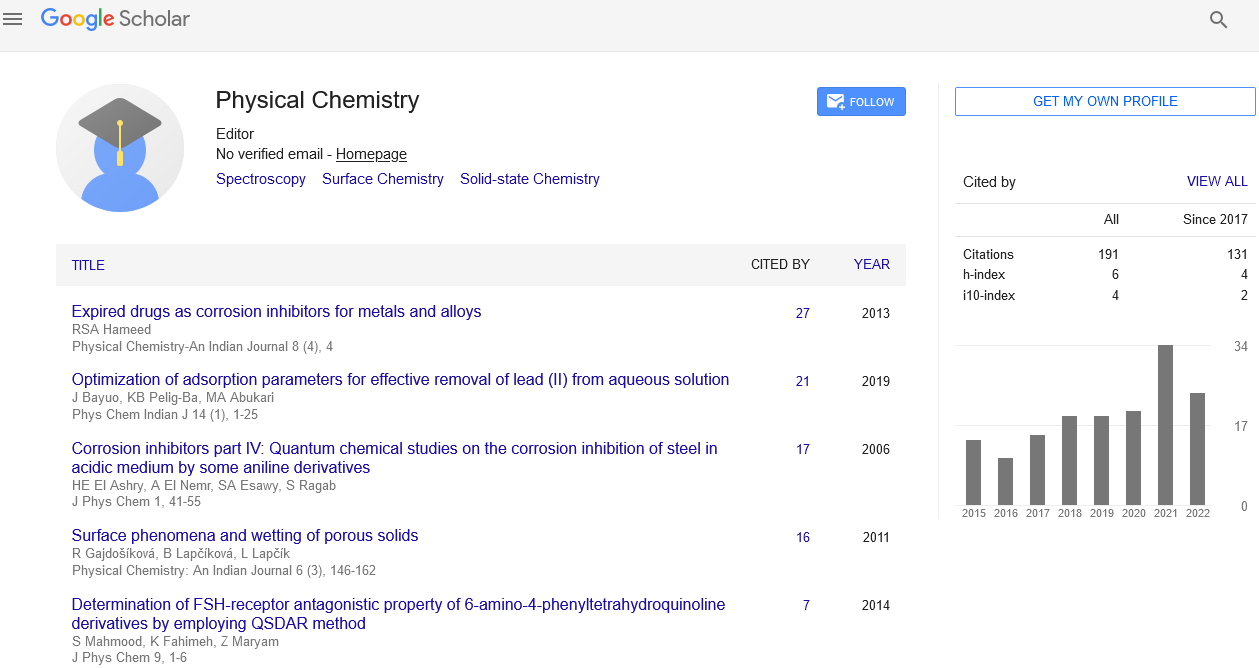Editorial
, Volume: 16( 3)Nuclear Magnetic Resonance Spectroscopyv
- *Correspondence:
- Aakshi Kainthola
Department of Life Sciences,
Graphic Era Deemed to be University,
Dehradun,
India,
E-mail: aakshi.kan7@gmail.com
Received: May 15, 2021; Accepted: May 18, 2021; Published: May 24, 2021
Citation: Kainthola A. Nuclear Magnetic Resonance Spectroscopy. Phys Chem Ind J. 2021;16(3):144.
Abstract
Editorial
NMR spectroscopy is an analytical chemistry technique for measuring the quantity and purity of a sample, as well as its molecular structure, that is used in quality control and research. NMR, for example, can be used to examine mixtures of known substances quantitatively. NMR can be used to identify unknown chemicals by comparing them to spectral libraries or inferring their basic structure. For tiny compounds, NMR spectra are distinctive, well-resolved, analytically tractable, and typically very predictable. Different functional groups can clearly be distinguished, and even identical functional groups with different adjacent substituents can provide distinct signals. For identifying substances, NMR has essentially supplanted traditional wet chemistry techniques such as colour reagents or standard chromatography. NMR's timescale is relatively long, making it unsuitable for viewing quick processes, as it only produces an averaged spectrum. Although huge amounts of contaminants appear on an NMR spectrum, better methods for identifying impurities exist because NMR is inherently insensitive-though sensitivity increases at higher frequencies.
According to the NMR principle, many nuclei have spin and all nuclei are electrically charged. When an external magnetic field is applied, energy can be transferred from the base energy to a higher energy level.
• Electrical charges exist in all nuclei, and many of them have spin
•When an external magnetic field is provided, energy can be transferred from base energy to higher energy levels
• The energy is transferred at a wavelength that is the same as the radio frequency
• When the spin returns to its base level, energy is emitted at the same frequency
• As a result, the processing of the NMR spectrum for the concerned nucleus is yielded by measuring the signal that fits this transfer
NMR spectroscopy working
• In a magnetic field, place the sample
• To generate NMR signals, use radio waves to excite the nucleus sample into nuclear magnetic resonance
• Sensitive radio receivers are used to detect these NMR signals
• The intramolecular magnetic field that surrounds an atom in a molecule alters its resonance frequency
• This information includes information on a molecule's various functional groups as well as its electrical structure
• The use of nuclear magnetic resonance spectroscopy to identify monomolecular organic molecules is a reliable method. This approach gives information about a molecule's reaction state, structure, chemical environment, and dynamics
Applications of NMR spectroscopy
• NMR spectroscopy is a spectroscopic technique used by chemists and biochemists to study the characteristics of organic molecules, while it can be applied to any sample with spin-containing nuclei
• The NMR, for example, can be used to examine mixtures containing known substances quantitatively. NMR can be used to match unknown chemicals to spectral libraries or to derive their basic structure directly
• NMR can be used to assess molecule conformation in solutions as well as to examine physical features at the molecular level such as conformational exchange, phase shifts, solubility, and diffusion once the basic structure is understood
Chemical shift in NMR spectroscopy
The discrepancy between the resonance frequency of the spinning protons and the signal of the reference molecule is known as chemical shift. One of the most essential qualities for determining molecule structure is nuclear magnetic resonance chemical change. NMR spectroscopy may also detect various nuclei, such as 1H (proton), 13C (carbon 13), 15N (nitrogen 15), 19F (fluorine 19), and many more. The most common are 1H and 13C.

